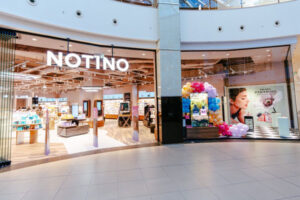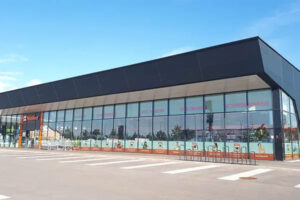By Costin Blideanu
People go to neighborhood centers for their daily needs and also prefer proximity shopping malls during weekdays. We hear this pretty often when speaking about shopping centers in Western Europe, where they already have a history. How valid is this observation for the Romanian market? Do proximity centers stand a chance against large schemes? Is it possible to develop a successful smaller (20,000 to 25,000 Sq. m GLA) shopping center? People prefer proximity in food operators (Mega Image is growing rapidly and approaching 600 shops), but are their daily needs strong enough to feed a shopping center?
If we analyze the Romanian market, we can see that, especially in Bucharest, the current status does not favor proximity shopping centers. Malls that were dominant retail projects in Bucharest 10 years ago, even if they were built on existing structures and smaller sizes of 35,000 to 40,000 Sq. m GLA, started to experience big difficulties after the large schemes appeared. One of them saw a big decline after the opening of AFI Europe Romania’s dominant shopping center, AFI Palace Cotroceni. A second center that also used to be a very successful scheme of 40,000 Sq. m of GLA experienced worsened results after two large projects of 70,000 Sq. m opened in close by in its catchment. There are also schemes that totally collapsed and were taken over by banks or transformed into offices, such as City Mall and Liberty Center. One can argue that they did not have the best layout, best mix, or best positioning, but what are the best choices for a neighborhood center?
What does a proximity mall really need to work and be sustainable? We should start from the target of these centers, which can be split into two aspects. People like to buy their daily products close to home, thus a mix very much focused on services and some mass market fashion is recommended. An entertainment part is unlikely to work when you have big schemes with a lot to offer in this area that you cannot compete with. The second target is consumers who don’t like crowded places and prefer smaller schemes with less traffic and stores that are not so busy. Up-market fashion brands should be added to the tenant mix to attract this target group.
How should a proximity center be positioned? Can it work when positioned as a medium, medium-to-low or, if the location is in a wealthy neighborhood, as a medium-to-high center? Speaking of Bucharest’s market, we have one example of a neighborhood center positioned for medium and medium-to-high consumers and this is what Promenada (a 40,000-Sq.-m-GLA center) is trying to do. Located in a wealthy neighborhood, it targets clients from a strong retail destination, Baneasa Shopping City, but, for the moment, it has not succeeded in influencing the mall substantially and is in the process of expanding to create a critical mass.
Some proximity centers were refurbished and totally changed their tenant mixes. Some succeeded better than others and managed to capture traffic. Developers here could take advantage of the fact that they could work with existing structures and invest only in refurbishment. How financially and commercially feasible it would now be to build a greenfield proximity center and make it sustainable and complementary to big schemes is a question that only time will answer—for the moment there is no such example in Bucharest’s market.
There is only one greenfield neighborhood center under development in Bucharest. It is being placed in a very dense area traditionally benefiting from very high traffic, but mainly targeted medium and medium-to-low profile consumers. Will the center manage to be mixed and positioned so it can benefit from this traffic? Will it be able to compete with very big schemes only five minutes’ drive away? We will have a clear picture in the next two years.
What is your opinion on this topic? Discuss it with us! Send your opinion to opinion@across-magazine.com !






